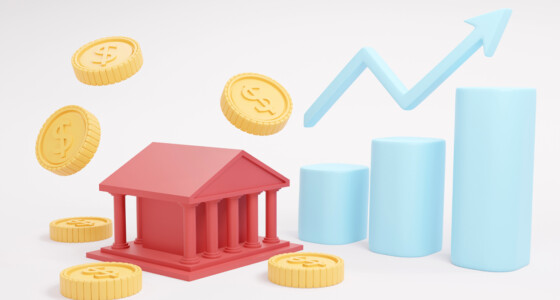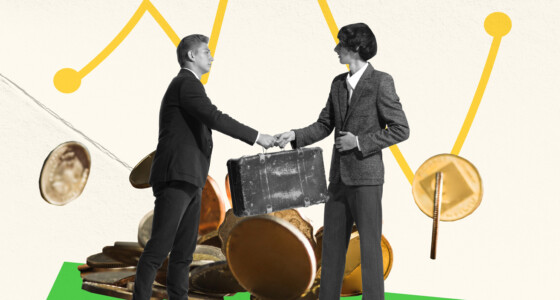

Financing and home economics are categories of knowledge that everyone should understand. Particularly for finance and economics students, fixed capital is an important concept. It is an integral part of modern financial systems. In this article, we will discuss what fixed capital is and its consumption, also known as CFC, and other things that a layperson and a full-time student need to know.
What is fixed capital?
If we answer in one sentence what fixed capital is, it is assets that are not consumed or destroyed during producing a good or service; that is, they can be used repeatedly. So, what are fixed assets? Homes, other buildings and structures, machinery and equipment, weapon systems, farmed biological resources, and intellectual property goods are all fixed assets.
Note! If you are wondering what a fixed capital account is, watch the CBSE video lecture in Hindi here.
Understanding fixed capital
Historically, fixed capital has been used to classify capital or assets that are exhausted in any production process. The easiest way of understanding fixed capital is by thinking of it as the part of a company’s total capital expenditure allocated to purchasing physical assets like factories, cars, and machinery that the company uses for an extended time. A fixed asset can be bought and held by a company or arranged as a long-term lease.
What is the difference between fixed capital and working capital?
Fixed capital is the investments and assets used to create and operate a company (for example, a factory or equipment).
Working capital is money or other liquid assets that a business uses to fund day-to-day activities (for example, it pays bills or salaries).
Working capital that circulates or is consumed by a business throughout the manufacturing process is on the opposite side of the equation. It covers labor, operating costs, and raw supplies, among other things.
Fixed capital is exhausted but over many production cycles. In other words, the core difference between fixed and working capital is that fixed capital is used up way slower over time since fixed assets could be retained for years or even decades before they lose value. Before its useful life is through, a fixed asset may be sold and utilized again at any time; this frequently occurs with automobiles and aircraft.
Examples of fixed capital
Let’s imagine the Indian youth Kishora bought a buffalo and a wooden cart on credit. What is Kishora’s fixed capital? A buffalo and a wooden cart are fixed assets. The money he earns from selling milk and transporting goods on a wooden cart, minus living expenses, constitutes his working capital.
As another example, consider a Mishrilal who wants to set up his jaggery manufacturing unit. What is Mishrilal’s fixed capital? The fixed capital is the sugar cane crushing machine, and the working capital is the money to buy sugar cane for processing and to pay the electricity bill to operate the crusher.
Fixed capital requirements
The fixed capital required to launch a company varies greatly depending on the circumstances, notably amongst industries. Some companies need a sizable amount of fixed-capital assets. Manufacturers of industrial goods, telephone companies, and oil exploration companies are typical examples.
Accounting businesses are one example of a service-based industry with lower fixed capital requirements. It can include workplaces, computers, networking equipment, and other standard office supplies.
While access to the inventory needed to generate the commodities produced is frequently easier for manufacturing enterprises, acquiring fixed capital can be drawn out. A company could require a long time to accumulate the cash needed for more considerable expenditures, such as new production facilities. Getting suitable loans might take some time if a business uses financing. Suppose a company does not have redundancy built in and experiences an equipment failure. In that case, the risk of financial losses due to low production may increase.

Depreciation of fixed capital
Usually, fixed capital assets do not decline uniformly, as depicted on income statements. While some soon lose value, others have practically endless persistence. For example, when a new car is legally transferred from the dealership to the new owner, it loses a lot of value. Buildings held by a firm, however, could depreciate considerably more slowly. Using the depreciation approach, investors may get a general idea of how much value fixed-capital investments add to the company’s current performance.
Liquidity of fixed capital
In layperson’s terms, the liquidity of any asset is the ability to convert it to cash. Although fixed capital frequently retains a certain level of value, these assets are not considered particularly liquid. This is because certain products, like manufacturing equipment, have a small market because they are expensive or take a long time to sell.
FAQs
Consider the main points regarding fixed capital.
What is meant by fixed capital in a production system?
The investment made by a business in long-term assets is called fixed capital. They are available for production purposes at a given time and can be used more than once. For example, factories, property, and equipment for the production of goods are all assets that include fixed capital.
What is Gross Fixed Capital Formation?
Gross Fixed Capital Formation (GFCF) refers to investments made in fixed assets by resident producers during a specific period after subtracting disposals. Fixed assets include tangible or intangible products of production that are used repeatedly or continuously for more than a year.
What is meant by the consumption of fixed capital?
It is also called CFC for short. Consumption of fixed capital is essentially a decrease in the value of fixed assets due to wear and tear or typical damage due to an accident. For example, equipment for producing goods wears out and breaks down over time.
What is meant by the fixed capital of a partner?
Fixed partnership capital can be explained as the aggregate of the capital contributions made by the partners after being adjusted for income, gains, losses, withdrawals, and distributions. Property capital contributions must be evaluated at fair market value as of the contribution date.
What is the fixed capital account in partnership?
A form of capital account in which a business maintains two separate accounts relating to different transactions occurring with partners’ capital is called a fixed capital account. With this method, two accounts are prepared for each partner:
- Сapital account;
- Сurrent account.
The first account is only used to record the partner’s capital. The second is used to record all other transactions of partners: salary, interest on capital, drawings, commission, shares in profits, etc.
The bottom line
This article comprehensively answers such questions as what is meant by a fixed capital system and how it differs from working capital. We also gave examples so that even 9- and 12-class students understand what the fixed capital method is.







